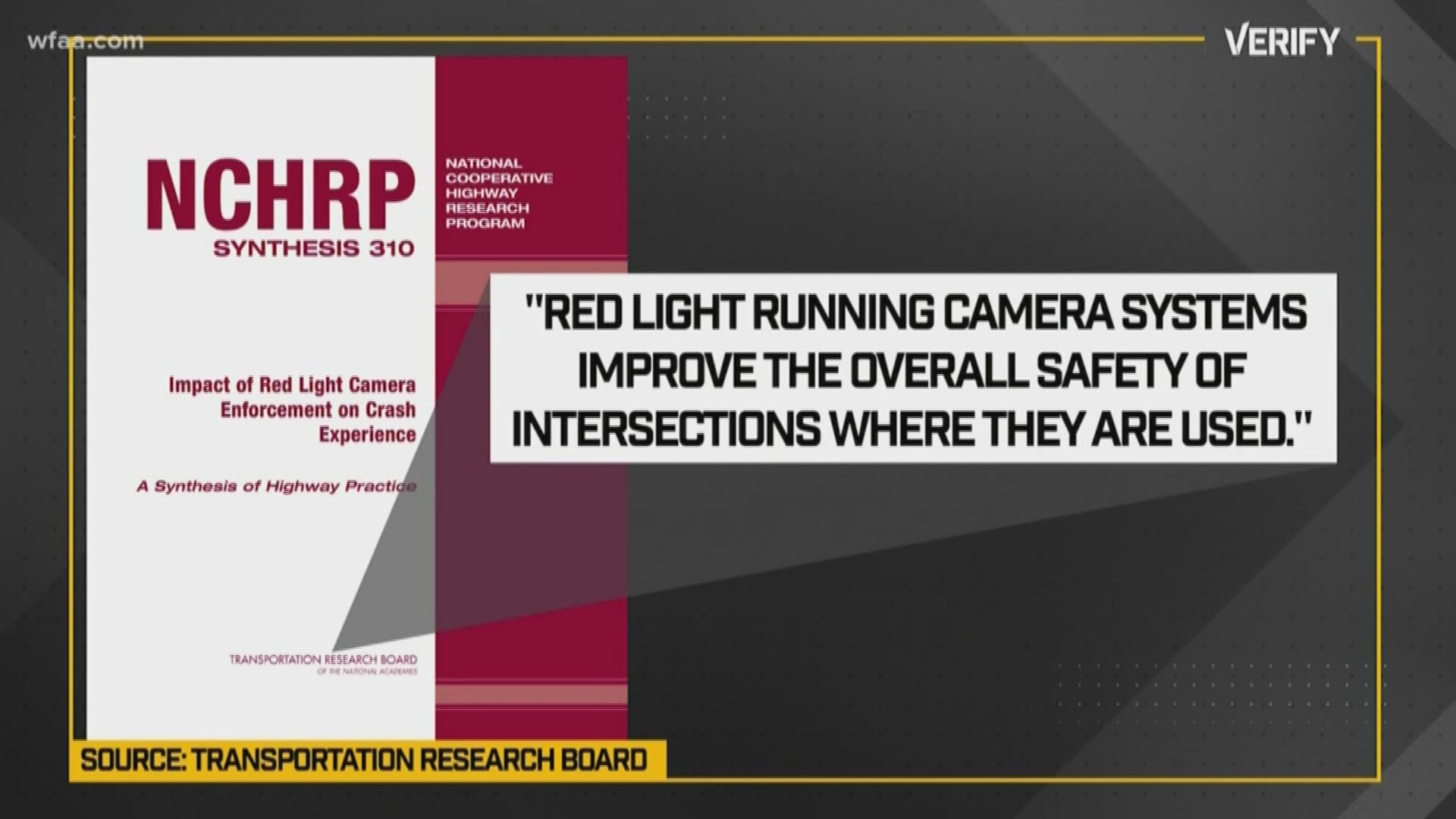Governor Greg Abbott, who's running for re-election, recently proposed that the Texas legislature ban red light cameras.
For Abbott, in part, it's a safety issue saying they may lead to more accidents. Is that true? Here's what he told me during a recent interview with WFAA:
"According to studies that I've seen, these red-light cameras actually increase the number of tail end accidents that are happening. I think the better solution is just good old-fashioned law enforcement."
More rear-end accidents because of red light cameras, that's what he's saying. What studies is Abbott talking about? This document from his campaign links to a study by Case Western University in Ohio.
That study looked at 12 years of data, in Texas, and concludes: Red light cameras do lead to more fender-benders, like rear-end crashes, from drivers slamming on the breaks trying to avoid a ticket.
The study has not been reviewed by other researchers to validate the findings. But some other researchers, in this space, have reached similar conclusions about rear-end crashes.
So, red light cameras make us less safe? Case closed?
Not really.
Let's look at the bigger picture with three research papers.
- The Transportation Research Board found the preponderance of evidence shows "red light running camera systems improve the overall safety of intersections where they are used."
- The Federal Highway Administration found they provide a cost benefit by reducing expensive t-bone injury collisions.
- And the Insurance Institute for Highway Safety found red light cameras are associated with a statistically significant reduction of fatal crashes.
So, back to Abbott's claim. Is it true that red light cameras may increase the risk of rear-end wrecks?
Yes.
But, big picture, the evidence suggests red light cameras can provide an overall safety benefit.
Got something you want verified? Send me an email to david@verifytv.com

